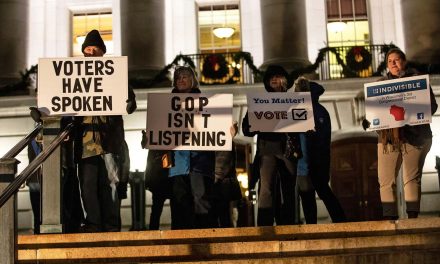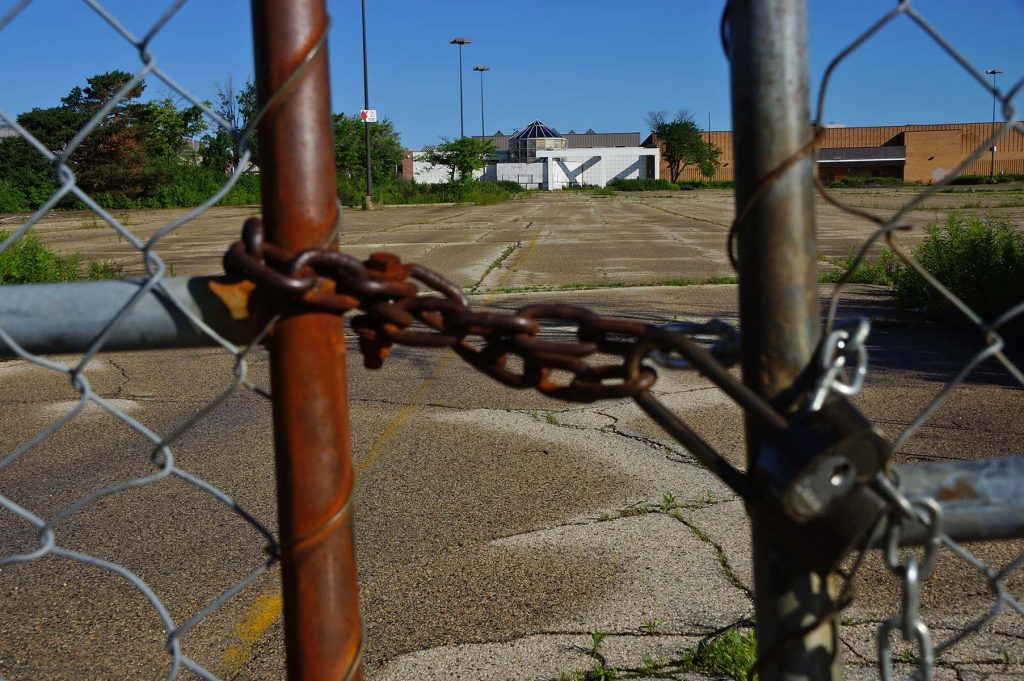
The good news is that Donald Trump has been voted out of the White House. The bad news is that Trump was not a unique, aberrant threat to American democracy; it was already broken so deeply and in so many ways that no single election can possibly repair the damage.
Even with a Biden administration, the worsening structural inequities embedded in the nation for centuries – and cynically exploited by Republicans to govern with narrow minority support – will still be with us. They are embodied in institutions such as the electoral college, which elected Trump in 2016 despite his losing the popular vote by almost 3 million votes.
In fact, including Biden, the Democratic candidate for president has won the popular vote in seven of the last eight elections. But in part because of the electoral college’s rural bias – a vote cast for president in Wyoming counts nearly four times as much as a vote cast in California, and in part because the college heightens the importance of a handful of largely white, midwestern battleground states, Republicans have won the White House with fewer votes twice since 2000.
Representational fairness is even more dire in the US Senate, which gives disproportionate power to older, whiter, more rural and more conservative interests. Right now, states representing just 17% of the nation’s population could elect a majority of senators. By 2040, the 15 most populous states will be home to 67% of Americans yet represented by just 30% of the Senate. Add up the actual votes received in the winning election of every sitting US senator, and Republicans haven’t won a senate majority since the mid-1990s. Yet they’ve controlled the Senate for 10 of the last 20 years, and used that advantage to shape the ideological balance on the federal courts.
By taking advantage of American democracy’s design flaws, Republicans secured an edge. State legislatures and the courts helped make it stick. After Barack Obama and the Democrats swept elections in 2008, Republicans identified another tactic that could be exploited as a path back to power: redistricting.
Every state legislature and congressional district is redrawn every 10 years, after the census, to account for population changes. In almost every state, state legislatures draw these lines. As part of a $30m Republican strategy called Redmap, Republicans identified 107 key state legislative seats across 16 states that would give them complete control of the process in the most important swing states: Florida, Michigan, North Carolina, Ohio, Pennsylvania, Wisconsin.
They won, and then drew themselves sophisticated maps that they have not lost on since: More than 50 million Americans live in a state in which one or both chambers of their state legislature is controlled by Republicans even though Democrats won more votes in 2018. And in the 2012 election, the first on these tilted maps, Republicans kept the House of Representatives despite losing the overall vote to Democrats by 1.4m.
In 2013, a 5-4 supreme court decision undid the “pre-clearance” protections of the Voting Rights Act, designed to check localities with a history of racial prejudice in voting laws. Chief Justice John Roberts argued that those voting protections were in response to “eradicated practices.” “Today the nation is no longer divided along those lines,” he argued, “yet the Voting Rights Act continues to treat it as if it were.”
This magically changed and racially harmonious nation then embarked on an orgy of voter suppression, largely aimed at disenfranchising Black and Latino voters.
Gerrymandered legislatures led the way. State Republicans rigged rules and entrenched themselves in power. Twenty-five states enacted restrictive voter identification (ID) bills or tightened measures already in place. Texas required ID that the state knew 600,000 registered Latino voters lacked. North Carolina’s legislature studied the exact forms of ID that Black voters were least likely to have, then required those. Alabama began enforcing a strict ID bill; then, in 2015, closed almost all of the offices in majority black counties where people could get those IDs.
And Wisconsin’s new law may have prevented 300,000 people from voting, a federal court found, in a state Trump carried by a margin of less than 25,000 in 2016. Between 2014 and 2018, according to the Brennan Center for Justice, 32 million Americans were purged from state voter rolls, disproportionately minority voters, for the flimsiest of reasons. Thousands of voting precincts were also shuttered, predominantly across the south. Once again, this disproportionately affected Black voters.
In some cases, citizens have organized heroic efforts to undo racist voter suppression and gerrymandering – only to see their own courts and legislatures override them. In Florida, a referendum to restore voting rights to 1.4 million formerly incarcerated citizens – people who lost the franchise permanently with a conviction, a cruel vestige of the Jim Crow South still with us 150 years after the Civil War – won in 2018 with almost 65% of the vote. In response, Florida’s gerrymandered legislature passed a law requiring all fines and fees associated with the conviction to be paid first. It was essentially a modern poll tax, and the courts went right along with it.
During this election, a record number of Americans voted early, by mail, or braved hours-long lines amid a pandemic to vote. Here, too, they had to battle their own government and courts, which worked in tandem to slow the mails and enforce rigid deadlines on when ballots must arrive to be counted.
Trump is responsible for only a small piece of this. American democracy will survive only if his party decides to walk away from these suppression tactics and compete for every vote in a multi-racial America. Perhaps this defeat will encourage that. Or maybe Republicans will take the same lesson they did from their 2008 walloping and double down, knowing they will be backed by courts packed with ideological true believers.
Trump may have lost, but the Texas governor who limited ballot dropboxes to one per county isn’t going anywhere. Nor are his congressional colleagues, who refused to fully fund the postal service amid expanded pandemic mail-in voting. And what about the Wisconsin state legislators who forced voters to the polls in-person this spring during coronavirus? Or the Republican officials who refused to begin processing millions of mail-in ballots early, enabling Trump to try to paint mail ballots as somehow fraudulent?
These past months have exposed the frailty of a system that relies on norms and responsible behavior from its leaders. These guardrails are more rickety than imagined.
Democracy reform must be job one for the Biden administration and its congressional allies, if he does clinch the presidency. There is a strong bill – the For The People Act – ready and waiting. Yet it would be naive to imagine many of those reforms would be allowed by this supreme court, which means that court reform must go hand in hand with our efforts to fix democracy.
The rot runs deep. A country that proclaims itself the greatest democracy in the world has an awful lot of work to do.
Еrіk S. Lеssеr
Portions originally published on The Guardian as Getting rid of Trump won’t be enough to fix America’s broken democracy
Help deliver the independent journalism that the world needs, make a contribution of support to The Guardian.













